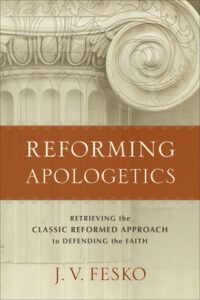
The Light of Nature
T he Westminster Confession (1647) begins with the statement “Although the light of Nature, and the works of Creation and Providence do so farre manifest the Goodnesse, Wisdome, and Power of God, as to leave men unexcusable yet are they not sufficient to give that knowledge of God and of his Will, which is necessary unto salvation” (1.1). What precisely do the divines intend by the term light of nature? One recent commentary on the Confession claims that the opening statement refers to one of two categories, namely, general and special revelation, or the books of nature and Scripture, and only briefly touches on the issue of humanity’s natural understanding of the book of nature. Two other commentaries bypass the statement altogether and deal entirely with Scripture as special revelation. Older nineteenth-century commentaries, however, devote more attention to the issue of the light of nature and explain it by the claim “God may be discovered by the light of nature, we mean that the senses and the reasoning powers, which belong to the nature of man, are able to give him so much light as to manifest that there is a God.” In line with this older trend, the most recent commentary on the Confession, written by Chad Van Dixhoorn, rightly notes that it begins with the doctrine of Scripture, but the first sentence deals with a different subject: the light of nature. Moreover, this commentary also explains the character of this concept: “There is the ‘light of nature,’ by which is meant the divine imprint which is left on each of us by our Maker. What precisely do the divines intend by the term light of nature? Click To TweetThat is, we are made in God’s image and even though we are fallen creatures, God’s image remains stamped upon us. And there are ‘the works of creation and providence.’ The world that we see and the world about which we read tell us of our Creator and Provider.”
he Westminster Confession (1647) begins with the statement “Although the light of Nature, and the works of Creation and Providence do so farre manifest the Goodnesse, Wisdome, and Power of God, as to leave men unexcusable yet are they not sufficient to give that knowledge of God and of his Will, which is necessary unto salvation” (1.1). What precisely do the divines intend by the term light of nature? One recent commentary on the Confession claims that the opening statement refers to one of two categories, namely, general and special revelation, or the books of nature and Scripture, and only briefly touches on the issue of humanity’s natural understanding of the book of nature. Two other commentaries bypass the statement altogether and deal entirely with Scripture as special revelation. Older nineteenth-century commentaries, however, devote more attention to the issue of the light of nature and explain it by the claim “God may be discovered by the light of nature, we mean that the senses and the reasoning powers, which belong to the nature of man, are able to give him so much light as to manifest that there is a God.” In line with this older trend, the most recent commentary on the Confession, written by Chad Van Dixhoorn, rightly notes that it begins with the doctrine of Scripture, but the first sentence deals with a different subject: the light of nature. Moreover, this commentary also explains the character of this concept: “There is the ‘light of nature,’ by which is meant the divine imprint which is left on each of us by our Maker. What precisely do the divines intend by the term light of nature? Click To TweetThat is, we are made in God’s image and even though we are fallen creatures, God’s image remains stamped upon us. And there are ‘the works of creation and providence.’ The world that we see and the world about which we read tell us of our Creator and Provider.”
But even though Van Dixhoorn’s analysis is correct, he only touches on the character of the light of nature. Namely, general revelation includes both the knowledge connected to the divine image and the works of creation and providence. He correctly acknowledges that the divines were following the apostle Paul’s arguments in Romans 1 and 2 and statements from the psalmist (Ps. 19). But Van Dixhoorn then concludes, “In those chapters the apostle both reminds us of this general revelation and tells us that it leaves every person without an excuse before God. For this reason, both in our evangelism and in our defence of the faith, we should always remember that Christians should never be trying to prove the existence of God to unbelievers. We are reminding unbelievers of what they already know.” Van Dixhoorn’s explanation of the Confession is generally true, but his analysis of its meaning and implication deserves deeper and more precise investigation.Late twentieth-century Reformed theology suffered a general antipathy to any form of natural theology. Click To Tweet
Late twentieth-century Reformed theology suffered a general antipathy to any form of natural theology. Reformed theologians were content to acknowledge the existence of general revelation and its role in rendering humanity guilty of failing to worship God as they ought, but they were little interested in assigning anything more to it. Instead, as in some of the recent commentaries on the Confession, theologians sprint for the doctrine of Scripture and hardly acknowledge the light of nature. While frequency statistics do not always reveal a doctrine’s importance, the term Trinity occurs only twice (2.1; 8.2) whereas the term light of nature appears five times in the Confession (1.1, 6; 10.4; 20.4; 21.1). Since the light of nature is not simply a passing idea, we should seek a thicker account of this concept.
One of the best sources for understanding the concept of the light of nature comes from one of the Westminster divines, Anthony Burgess (d. 1664). Burgess participated in the writing of the Confession and also lectured on the subject when the divines were constructing the Confession’s chapter on the law. In fact, some argue that Burgess’s lectures in his Vindiciae Legis provide a window into understanding the intricate details that undergird the Confession’s summary presentation of the law. In short, the light of nature denotes the book or order of nature written and designed by God—an important tool in defending the Christian faith. Click To TweetThis is not to say that Burgess was the chief architect or author of chapter 19 on the law. Nevertheless, the structural similarities between Burgess’s lectures and the final product reveal the symbiotic relationship between the two. Hence, an examination of Burgess’s lectures on the law provides a primary-source explanation of what the Westminster divines intend by the term light of nature. Through the use of Burgess’s lectures, this chapter demonstrates that the light of nature denotes three things: (1) natural law, (2) human reason, and (3) God’s natural revelation in creation. In short, the light of nature denotes the book or order of nature written and designed by God—an important tool in defending the Christian faith, a tool forgotten by many in contemporary Reformed theology but regularly used by early modern Reformed theologians. In contrast to some recent analyses of the first chapter of the Confession, Burgess gives a full-throated explanation and defense of the light of nature as natural law and human reason.
The above excerpt is from Reforming Apologetics by J. V. Fesko. Baker Academic, a division of Baker Publishing Group, © 2019. Used by permission.

